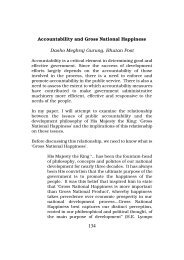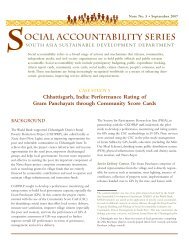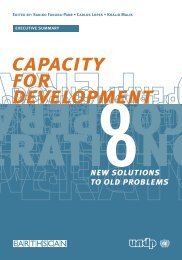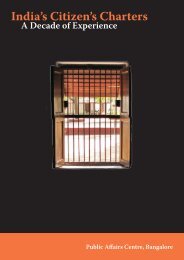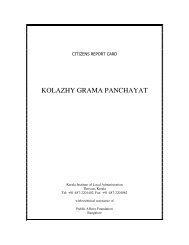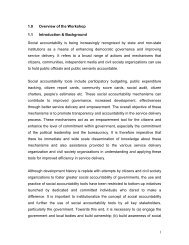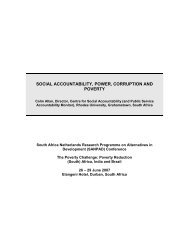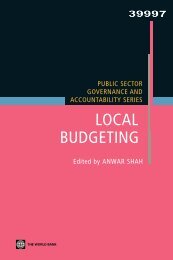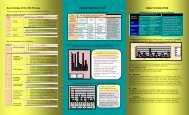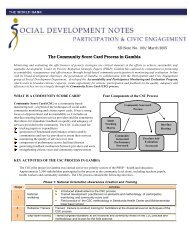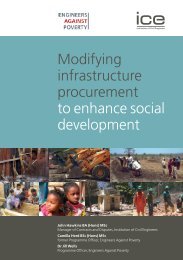Handbook on Citizen Engagement: Beyond Consultation - SASANet
Handbook on Citizen Engagement: Beyond Consultation - SASANet
Handbook on Citizen Engagement: Beyond Consultation - SASANet
- No tags were found...
You also want an ePaper? Increase the reach of your titles
YUMPU automatically turns print PDFs into web optimized ePapers that Google loves.
Appendix A. An Overview of Public Participati<strong>on</strong> Methods c<strong>on</strong>t’dAppendix A. An Overview of Public Participati<strong>on</strong> Methods (c<strong>on</strong>t’d)Method Descripti<strong>on</strong> Strengths Limitati<strong>on</strong>s Examples• James Fishkin developed themethod in 1988.Deliberative polls were used:Deliberativepolls• Builds <strong>on</strong> the opini<strong>on</strong> poll byincorporating element ofdeliberati<strong>on</strong>• Measures what public wouldthink if it was informed andengaged around an issue• Composed of a randomlyselected sample of citizens:• Large or small groups (50 to500+ pers<strong>on</strong>s)• Involves polling theparticipants, followed bydiscussi<strong>on</strong>, and finally, pollingthem again.• Provides insights into publicopini<strong>on</strong>s and how peoplecome to decisi<strong>on</strong>s• Seeks informed opini<strong>on</strong>s,does not force people toreach c<strong>on</strong>sensus• Large, random sample• Changes in resp<strong>on</strong>ses can beobserved after the deliberativeinterventi<strong>on</strong> takes place• Help to measure citizen’svalues and preferences• Small size of individual groupsand their n<strong>on</strong>-intimidatingnature allows for innovativeideas and active participati<strong>on</strong>• Incentives (e.g., h<strong>on</strong>orarium,transportati<strong>on</strong>) are importantrequires a lot of preparati<strong>on</strong>time• Although sample size is largeand random, ensuringrepresentativeness is difficult• Process requires significantresources and intensive timecommitment for participantsand organizers.• Can be difficult to generateneutral and complete briefingmaterial• In Great Britain for the futureof the Nati<strong>on</strong>al Health Serviceand for policies to reducecriminality.• In Australia for therec<strong>on</strong>ciliati<strong>on</strong> with nativepeoples and the aboliti<strong>on</strong> ofm<strong>on</strong>archy.• In Denmark for the adopti<strong>on</strong>of the Euro as nati<strong>on</strong>alcurrency.• In the USA for energy andenvir<strong>on</strong>mental policies.• In 2002, a similar method wasused for the project Listeningto the City : Remember andRebuild to rebuild LowerManhattan.Key references <strong>on</strong> deliberative polls:Center for Deliberative Democracy. [http://cdd.stanford.edu/polls/index.html].Fishkin JS. The Voice of the People: Public Opini<strong>on</strong> and Democracy. New Haven: Yale University Press, 1995.Fishkin JS., Luskin RC and Jowell R. “Deliberative Polling and Public C<strong>on</strong>sultati<strong>on</strong>”. Parliamentary Affairs 2000, 53(4) : 657-666.CANADIAN POLICY RESEARCH NETWORKS 53




